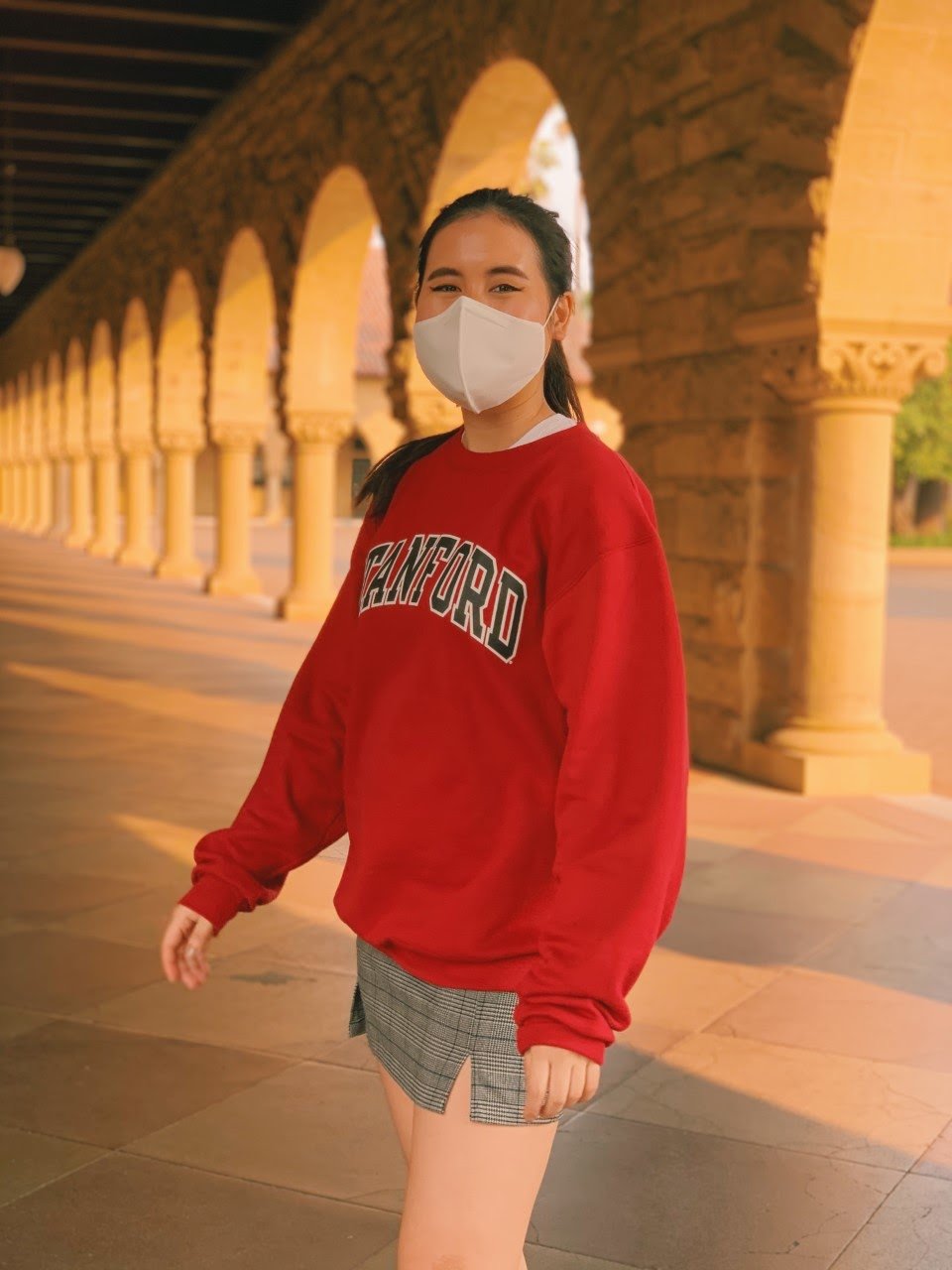For Brian Wu ’24, fall quarter was a lonely start to his undergraduate career. At home, there were no students he could talk to in the hallway, people to have late night conversations with or RAs to help him navigate his undergraduate experience. He felt like he was missing a sense of community that he hoped to find at Stanford.
Coming to campus in winter quarter, though, Wu was pleasantly surprised: Even amid the circumstances of the pandemic, he finally felt that he had found a sense of community.
“Being able to be in a dorm with so many supportive people is truly an incredible feeling compared to being at home,” Wu said. “Not everybody is here, but for those of us who are here, the community is very, very strong.”
The pandemic has relegated most frosh to remote classes, leaving many feeling isolated from the campus community. But some, approved to live on campus due to compelling personal or academic needs, have had the opportunity to build community in person and remedy some of the undergraduate experience that has been lost as a result of the pandemic.
Despite having to maintain social distance, frosh said, living in majority-frosh dorms with supportive residential staff has helped them maintain a sense of community.
Wu lives in Lantana, a majority-frosh dorm. He said that his peers and RAs have been crucial to helping him adjust to life on the Farm by sharing time management tips, hosting virtual house meetings that foster community and making him feel supported overall.
“[The first house meeting] was really just about introducing us to the values of the dorm and introducing us to the Stanford community on campus, which I really appreciated. It was also about introducing us to each other,” Wu said. “House meeting is a great place for dorm connections to happen.”
Lingarbel Brempong ’24, who also lived on campus in the fall, said residential staff are making an effort to get more people involved in virtual house meeting.
“[RAs] will run through the halls blasting music to try to get everyone to try to come to house meeting,” Brempong explained. In fall quarter, “you weren’t really noticed if you missed [a meeting].”
Still, some students have expressed frustration with the housing situation this quarter. Per University policy, students are allowed to form households, or social pods, of up to eight people within the same housing facility.
In the fall, the majority of the undergraduate population lived in the Escondido Village Graduate Residence-A (EVGR-A). Now, most of those undergraduates have been moved to various dorms on campus, spreading out the undergraduate population.
Lillian Towe ’24, who is currently staying in Otero, said she preferred living in EVGR.
“Everybody who was on campus was in that building, and so when it came time to form ‘households,’ we weren’t restricted with who we could interact with,” Towe said. Now, she cannot see the people she was in a household with last quarter.
Brempong added that the change in housing has made it more difficult to make friends as a frosh. During fall quarter, there were about 600 undergraduate students living in EVGR. Now, Brempong said, there are only about 17 people living in her dorm.
“[In fall quarter], I could choose from anyone in [EVGR] to form a household with. Now only having households within your dorm definitely limits who you can and can’t hang out with,” Brempong said.
Makenna Turner ’24 said that she believes the current housing situation is also causing people to break the rules more frequently. In January, The Daily reported on two undergraduate gatherings of over 20 people, both of which violated the University’s COVID-19 safety protocols. Some students have also told The Daily that they are hesitant to report their peers for violating the rules.
“Day one, people were breaking the rules,” she said. “And it’s because the rules themselves are very difficult to figure out.”
As for life in her new dorm, Turner said that she feels as though she has not had the opportunity to get to know the people in her dorm, which she accredits to Stanford’s last-minute cancellation of its winter quarter plans. “There were signs up for kids who never moved in, and I never even got a sign,” she said.
Given that undergraduates are dispersed across campus this quarter, some frosh have been looking to other resources to make new friends.
Audrey Pe ’24 said that she has made most of her friends outside of the dorm community, including in her classes.
Pe is not the only frosh to rely on resources outside of the dorm to build community. Towe said that she has had the opportunity to make new connections through her involvement in various student groups, including the Society for International Affairs, King International Development Association and Black QTs.
“One of the things Stanford [clubs] has been good about is having different Zoom events for students to get to know each other,” she said.
Wu also credits his time spent with Frosh Council with being crucial to his Stanford experience thus far. Frosh Council, which consists of just 20 students this year versus the typical 31, has allowed him to both advocate for important issues and build connections.
“Having the opportunity to serve for student government every week — especially during the pandemic — is an incredible and unique opportunity,” Wu said. “We are seeing how the pandemic is disrupting the normal operations of Stanford and to really be able to advocate on behalf of the frosh class is something I’m very passionate about.”
